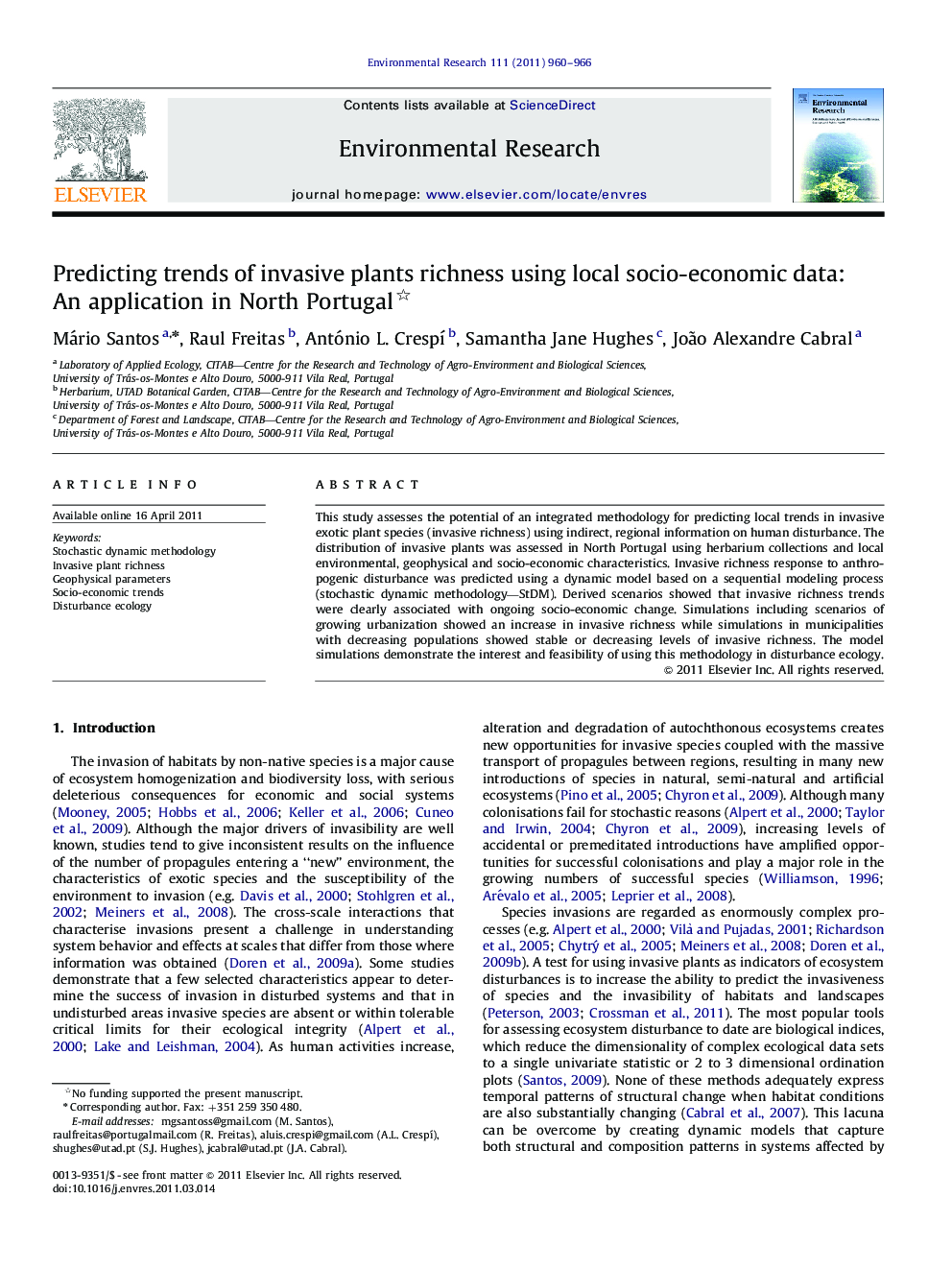| Article ID | Journal | Published Year | Pages | File Type |
|---|---|---|---|---|
| 4470129 | Environmental Research | 2011 | 7 Pages |
This study assesses the potential of an integrated methodology for predicting local trends in invasive exotic plant species (invasive richness) using indirect, regional information on human disturbance. The distribution of invasive plants was assessed in North Portugal using herbarium collections and local environmental, geophysical and socio-economic characteristics. Invasive richness response to anthropogenic disturbance was predicted using a dynamic model based on a sequential modeling process (stochastic dynamic methodology—StDM). Derived scenarios showed that invasive richness trends were clearly associated with ongoing socio-economic change. Simulations including scenarios of growing urbanization showed an increase in invasive richness while simulations in municipalities with decreasing populations showed stable or decreasing levels of invasive richness. The model simulations demonstrate the interest and feasibility of using this methodology in disturbance ecology.
► Socio-economic data indicate human induced disturbances. ► Socio-economic development increase disturbance in ecosystems. ► Disturbance promotes opportunities for invasive plants.► Increased opportunities promote richness of invasive plants.► Increase in richness of invasive plants change natural ecosystems.
